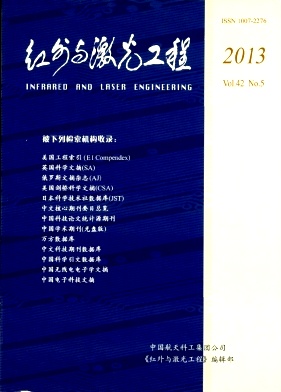|
[1]
|
|
|
[2]
|
Dillon O W. Coupled thermoplasticity[J]. Journal of Mechanics and Physics in Solids, 1963, 11: 21-23. |
|
[3]
|
Kratochvil J, Dillon O W. Thermodynamis of elastic-plastic materials as a theory with internal state variables[J]. Journal of Applied Physics, 1969, 40(8): 3207-3218. |
|
[4]
|
|
|
[5]
|
|
|
[6]
|
Shin E S, Kim S J. A predictive measure of thermomechanical coupling in elasto-viscoplastic composites[J]. Composites Science and Technology, 1999, 59: 1023-1031. |
|
[7]
|
Luo Wenbo, Hu Yungui, Hu Zihua, et al. Thermome chanical analysis of upsetting of cylindrical billet between rough platedies[J]. Journal of Plasticity Engineering, 2000, 7(1): 64-69. (in Chinese) |
|
[8]
|
|
|
[9]
|
|
|
[10]
|
Oliferuk W, Majet M, Litwinko R, et al. Thermomechanical coupling in the elastic regime and elasto-plastic transition during tension of austenitic steel, titanium and aluminium alloy at strain rates from 10-4 to 10-1 s-1[J]. European Journal of Mechanics A/Solids, 2011, 35: 111-118. |
|
[11]
|
|
|
[12]
|
?ana?ija M, Brni? J. Associative coupled thermoplasticity at finite strain with temperature-dependent material parameters[J]. International Journal of Plasticity, 2004, 20: 1851-1874. |
|
[13]
|
|
|
[14]
|
Vaz Jr M, Muňoz-Rojas P A, Lange M R. Damage evolution and thermal coupled effects in inelastic solids[J]. International Journal of Mechanical Sciences, 2011, 53: 387-398. |
|
[15]
|
Li Shouxing, Huang Yi, Shi Changxu. The finite element analysis of heat field of metal sheet during elastic-plastic deformation[J]. Acta Metall Sin, 1985, 21(1): B7-B15. (in Chinese) |
|
[16]
|
|
|
[17]
|
Han Ronghui. Non-classical plastic theory: a comprehensive study in experiment, constitutive equation and numerical analysis on thermomechanical couplings between thermodynamics and solid mechanics[D]. Chongqing: Chongqing University, 1996. (in Chinese) |
|
[18]
|
|
|
[19]
|
Wang Wenping, Wan Min, Wu Xiangdong, et al. Experimental research and FEM analysis of deformation-induced heating in tensile testing of auto-use steel sheet[J]. Journal of Plasticity Engineering, 2009, 16(5): 106-111. (in Chinese) |
|
[20]
|
|
|
[21]
|
Zhang Yuguang, Zhao Aimin, Jin Guangcan, et al. Coversion of plastic work to heat during plastic deformation of DP steel[J]. Steel Rolling, 2010, 27(2): 11-14. (in Chinese) |
|
[22]
|
|
|
[23]
|
Prez-Castellanos J L, Guzmn-Lpez R, Rusinek A, et al. Temperature increment during quasi-static compression tests using Mg metallic alloys[J]. Materials and Design, 2010, 31: 3259-3269. |
|
[24]
|
|
|
[25]
|
Rusinek A, Klepaczko J R. Experiments on heat generated during plastic deformation and stored energy for TRIP steels[J]. Mater Des, 2009, 30: 35-48. |
|
[26]
|
|
|
[27]
|
|
|
[28]
|
Huang Chaojun, Liu Yafeng, Yin Jiwu, et al. Inversion parameters of shadowing function and optimization of BRDF statistical modeling on target surface[J]. Infrared and Laser Engineering, 2010, 39(5): 883-886.(in Chinese) |
|
[29]
|
|
|
[30]
|
Lv Shigui, Yang Li, Fan Chunli, et al. Chaos-LM hybrid algorithm for the defect quantitative identification with single-sided infrared inspection[J]. Infrared and Laser Engineering, 2013, 42(2): 317-323. (in Chinese) |
|
[31]
|
Cai Lixun, Yao Di, Bao Chen. The measuring and testing technique for the true stress-strain curve during the entire uniaxial tensile process: China, 102221503[P]. 2011-10-19. (in Chinese) |









 DownLoad:
DownLoad: